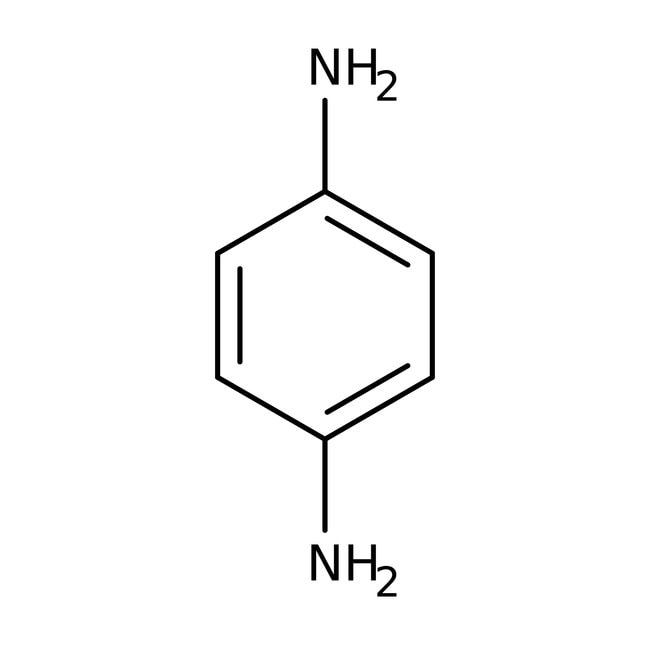Search Thermo Fisher Scientific
P-phénylènediamine, 97 %, Thermo Scientific Chemicals



P-phénylènediamine, 97 %, Thermo Scientific Chemicals
Identifiants chimiques
Spécifications
Description
This Thermo Scientific Chemicals brand product was originally part of the Alfa Aesar product portfolio. Some documentation and label information may refer to the legacy brand. The original Alfa Aesar product / item code or SKU reference has not changed as a part of the brand transition to Thermo Scientific Chemicals.
La p-phénylènediamine est utilisée comme précurseur des plastiques aramides, des fibres de Kevlar et des polymères d’uréthane. Elle sert d’agent de développement en photographie, d’antioxydant dans les produits en caoutchouc et d’accélérateur de vulcanisation. Elle est utilisée comme substitut du henné pour les tatouages temporaires et comme colorant histologique des lipides tels que la myéline. C’est un réactif anti-décoloration utilisé en microscopie par fluorescence pour retarder le photoblanchiment de la fluorescéine et d’autres colorants fluorescents. En outre, c’est aussi un ingrédient des teintures capillaires.
Solubilité
Soluble dans l’alcool, le chloroforme, l’éther et le benzène chaud.
Remarques
Stockez-le dans un endroit frais. Incompatible avec les acides, les chlorures acides, les anhydrides d’acides, les chloroformates et les agents oxydants forts.
Figures
Documentation et téléchargements
Certificats
Foire aux questions (FAQ)
Citations et références
Sécurité et manipulation
Classification of the substance or mixture
CLP classification - Regulation(EC) No 1272/2008
Label Elements
Signal Word
Danger
Hazard Statements
H301 + H311 + H331 - Toxic if swallowed, in contact with skin or if inhaled
H317 - May cause an allergic skin reaction
H319 - Causes serious eye irritation
H410 - Very toxic to aquatic life with long lasting effects
Precautionary Statements
P273 - Avoid release to the environment
P305 + P351 + P338 - IF IN EYES: Rinse cautiously with water for several minutes. Remove contact lenses, if present and easy to do. Continue rinsing
P280 - Wear protective gloves/protective clothing/eye protection/face protection
P302 + P350 - IF ON SKIN: Gently wash with plenty of soap and water
P304 + P340 - IF INHALED: Remove victim to fresh air and keep at rest in a position comfortable for breathing
P312 - Call a POISON CENTER or doctor if you feel unwell